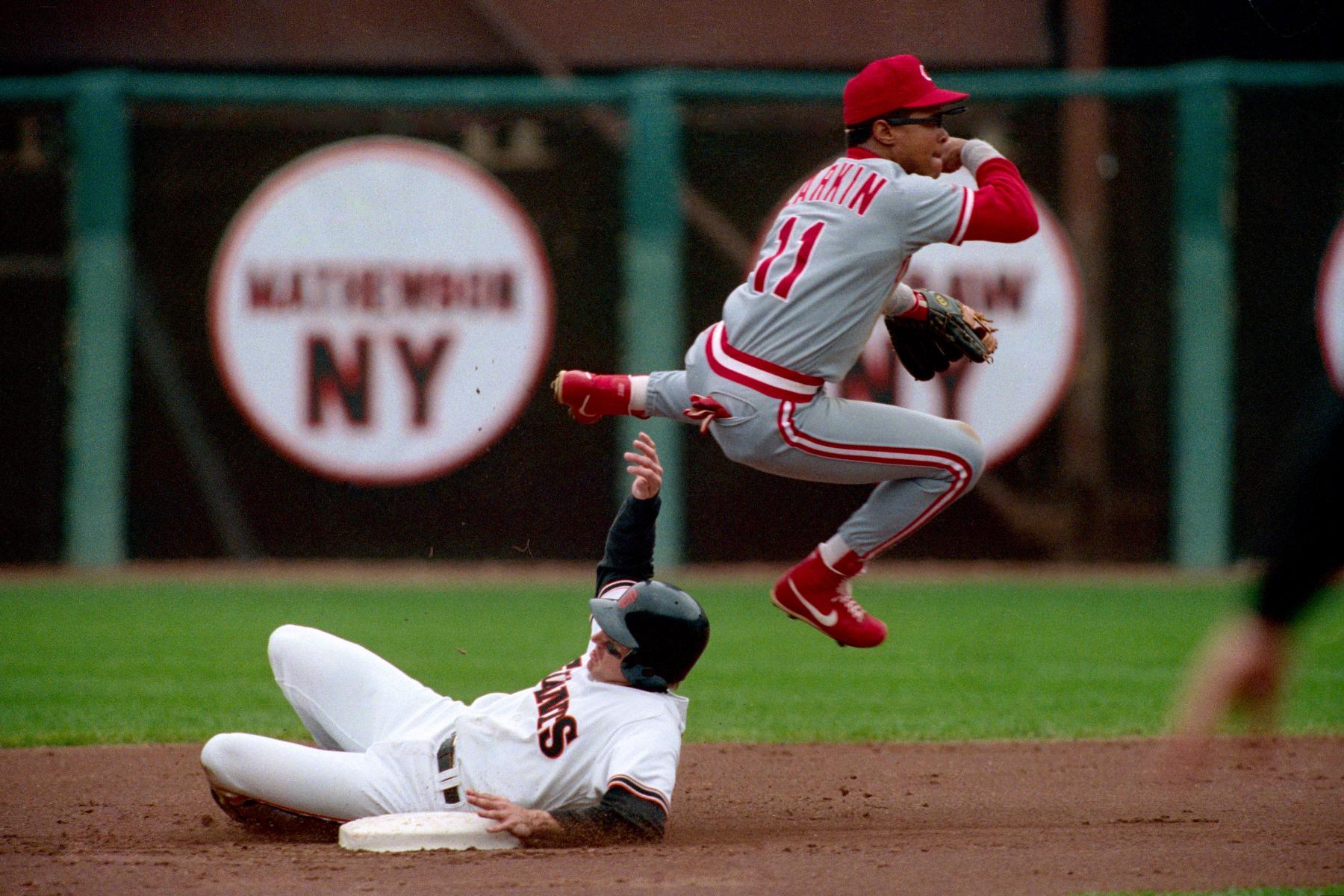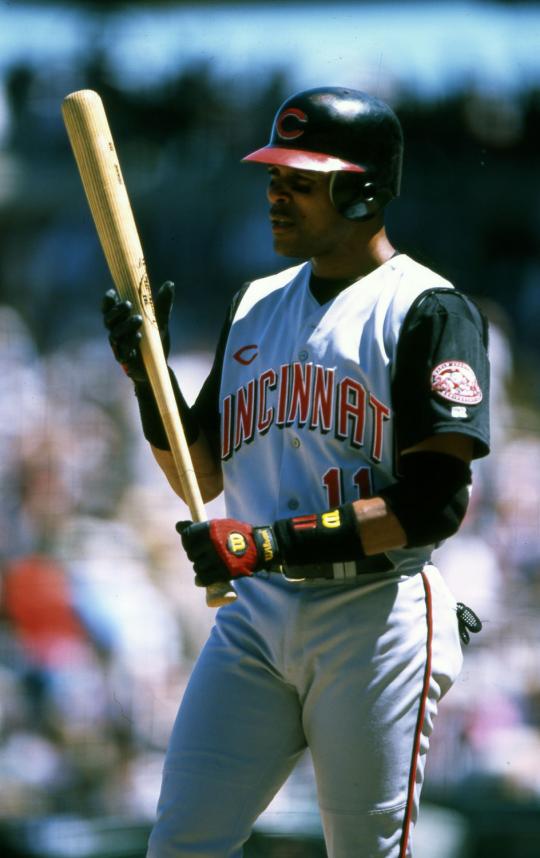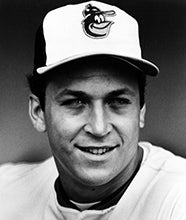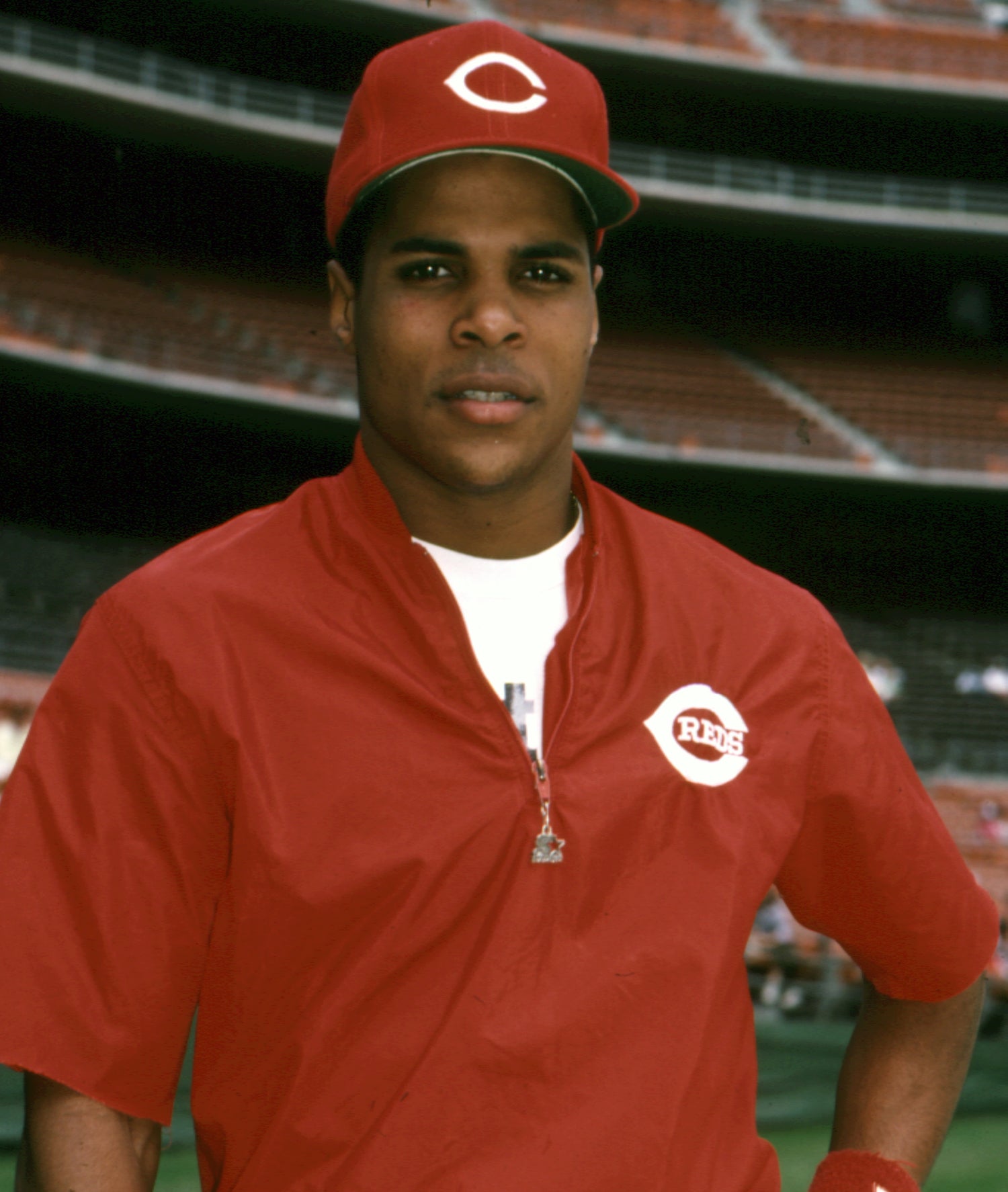"No third baseman I ever played against or saw cross the white lines was better at his position. As a fielder, no one hustled more and covered as much ground as Ron Santo."
- Home
- Our Stories
- Larkin and Santo join baseball’s elite
Larkin and Santo join baseball’s elite
On July 3, 1960, Chicago Cubs third baseman Ron Santo would hit the first home run of his 15-year career in the big leagues – a three-run blast to left field against the Cincinnati Reds.
A little more than 52 years later - on July 22, 2012 - Santo would achieve baseball immortality with one of the Reds’ most popular players – Barry Larkin – as the two were inducted into the Baseball Hall of Fame.
Though the two players were inducted together, their paths that led to Cooperstown were markedly different.
A nine-time all-star, Santo enjoyed a consistently successful career in baseball. He spent 14 seasons with the Cubs before joining the crosstown rival White Sox for his final campaign in 1974. He made big league debut on June 26, 1960, one year after signing with the Cubs as an amateur free agent.
Santo recorded his first hit as a big leaguer in his first career at-bat, a single to center field off Pittsburgh Pirates right-hander Bob Friend. The hit came in the second inning of a Cubs 7-6 victory. He would record 2,254 total hits for his career.
Overall, Santo would finish his career as a .277 hitter with 342 home runs. Known as a stellar fielder, he would also win five consecutive Gold Glove Awards from 1964-1968.
“No third baseman I ever played against or saw cross the white lines was better at his position,” Reds Hall of Fame catcher Johnny Bench said. “As a fielder, no one hustled more and covered as much ground as Ron Santo.”
Santo would hit 30 or more homers in four seasons. In 1964, he would hit 30 homers and lead the National League in triples with 13. Santo also lead the NL in walks four times.
Also a broadcaster for the Cubs for 20 seasons, Santo had his No. 10 retired by the team in 2003.
Larkin joined Santo in the 2012 Hall of Fame class. The Cincinnati native would spend his entire 19-year big league career as the Reds shortstop after being their first selection (fourth overall) in the 1985 amateur draft.
Appearing as a pinch hitter, Larkin debuted for the Reds as a fresh-faced 22 year-old on Aug. 13, 1986. He grounded out to second, driving in his first major league run. The next game, his first major league hit would come as he started at second base against the San Diego Padres. Larkin led off the bottom of the first with a single to right field.
Two years later, in 1988, Larkin would make his first of 12 all-star appearances. He hit .296 with 32 doubles and 40 stolen bases that year.
Chicago Cubs third baseman Ron Santo collects a putout in a game against the Montreal Expos at Wrigley Field. Santo captured five consecutive Gold Glove Awards from 1964-68. BL-5510-72 (National Baseball Hall of Fame Library)
Share this image:
The high mark of Larkin’s career would come during the 1995 season. He would hit a career-best .319 with 15 home runs and swiping a career-high 51 bases. For his efforts in the ’95 campaign, Larkin was named the National League’s Most Valuable Player.
Larkin would follow up his MVP season by hitting a career-high 33 home runs and stealing 36 bases, while hitting .298 – becoming the first shortstop to reach the 30-homer/30 steal plateau.
In 1990, Larkin hit .301 with 25 doubles and 30 steals to help lead the Reds to a World Series title over the Oakland Athletics in a four-game sweep.
Larkin was elite with both his bat and glove. In addition to his double digit all-star appearances and MVP award, Larkin would also win three Gold Glove Awards and nine Silver Slugger Awards.
Known for his exploits on the field, Larkin also shined as an ambassador for the Reds and the game of baseball away from the diamond.
"For 19 years Barry represented the Cincinnati Reds and the game of baseball so well both on and off the field,” fellow Hall of Fame shortstop Cal Ripken said. “When I think of Barry I think of a steady, smart and terrific all-around player both at shortstop and at the plate. I wish we had played in the same league, but we were in 11 All-Star Games together and I always enjoyed being around him and talking baseball.”
Larkin would finish his career as one of the game’s best shortstops. A career .295 hitter, he also smacked 198 home runs and stole 378 bases. The Reds retired Larkin’s No. 11 in 2012.
Ryan Turnquist was a public relations intern in the Frank and Peggy Steele Internship Program at the National Baseball Hall of Fame and Museum
Support the Hall of Fame
Related Stories

#GoingDeep: Carlos Paula, the man who integrated the Washington Senators

Ford breaks Ruth’s World Series scoreless innings streak

“Old Pete:” How Grover Cleveland Alexander Got His Nickname

1941 Hall of Fame Game

#CardCorner: 1967 Topps Joe Foy

Remembering Monte Irvin

Legends, SIMPSONS Team Up for Memorable Hall of Classic
March Matinee: Meet Hoops Heroes Who Call Cooperstown Home

Buck Leonard and Josh Gibson are elected to the Hall of Fame
Hall of Fame Weekend 2017 to Feature Inductions of Jeff Bagwell, Tim Raines, Iván Rodríguez, John Schuerholz, Bud Selig, July 28-31 in Cooperstown
01.01.2023



















